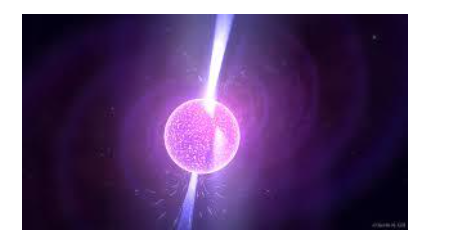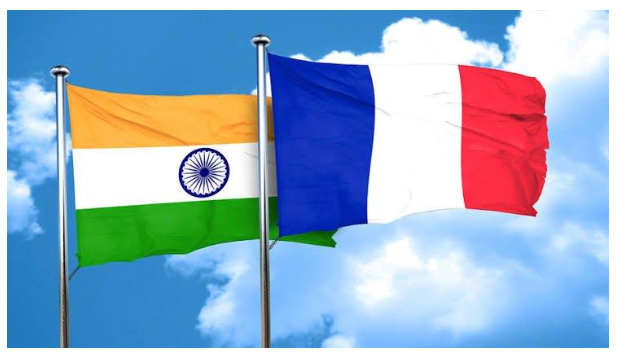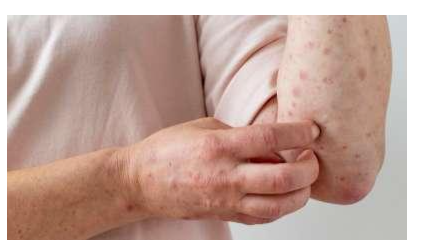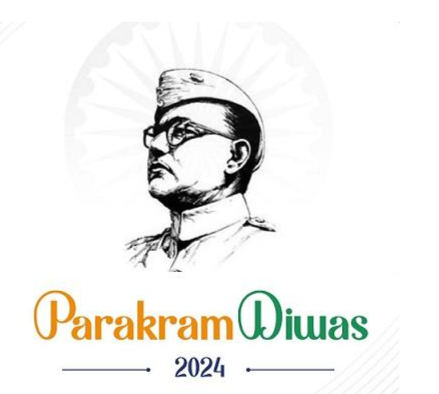Wednesday, 31st January 2024
ASI Survey Findings Regarding Gyanvapi Mosque
In News: The Archaeological Survey of India (ASI) recently conducted a survey at the Gyanvapi mosque complex, revealing 55 stone sculptures, including idols of Hindu Deities.

Gyanvapi Mosque: Key Highlights from ASI Survey
- Discovery of Broken Idols
- Fragments of statues depicting Hindu Deities like Hanuman, Ganesha, and Nandi found in mosque complex.
- Various sculptures damaged, including those of Shiva linga, Vishnu, Ganesha, Krishna, and Hanuman.
- Yonipattas and Shiv Linga
- Discovery of several yonipattas, the base of a shivling.
- A shiv linga with its bottom part missing was also found.
- Indian Inscription
- 32 inscriptions in Devanagari, Grantha, Telugu, and Kannada scripts found.
- Inscriptions indicate reuse of stone from a preexisting Hindu temple in mosque construction.
- Swastik and Trident Marks
- Marks on the structure, including swastika and trident symbols.
- Swastika and trident are ancient Hindu symbols.
- Coins and Sandstone Slab with Persian Inscription
- Unearthed objects like coins, Persian-inscribed sandstone slab, and other artifacts.
- Persian inscriptions provide an account of temple demolition during Aurangzeb's reign.
- Method Used in Survey at Gyanvapi Mosque
- Detailed non-invasive survey conducted by ASI in Varanasi.
- Active and passive methods used, including seismic techniques, electromagnetic methods, magnetometry, gravity surveying, and ground-penetrating radar (GPR).
- GPR employed to create a 3-D model of buried archaeological features.
- Carbon dating used to establish the age of organic materials.
Gyanvapi Mosque Dispute
- Demolition of Temple
- Belief that the mosque was built in 1669 by demolishing the Vishweshwar temple.
- ASI report mentions mosque construction in the 20th regal year of Aurangzeb (1676-77 CE).
- Legal Battle
- Gyanvapi mosque dispute in court since 1991.
- Three individuals filed a suit claiming temple demolition by Aurangzeb.
- Court constituted a commission to assess the status of Mata Shringar Gauri Temple.
- Comprehensive map presented in court identifying Hindu deity temples around the mosque entrance.
- Muslim side argues that the dispute cannot be decided under the Places of Worship Act, 1991.
- Gyanvapi Case still pending before the judiciary.
Source: IE
Sub-Categorisation of Scheduled Castes
In News: The Indian government has established a high-level committee, headed by the Cabinet Secretary, to tackle the issue of certain Scheduled Caste (SC) communities receiving more benefits than the most disadvantaged ones.
Mandate of the Newly Formed Committee
- Objective
- The committee's primary goal is to address grievances faced by various Scheduled Caste (SC) communities nationwide.
- Scope
- Initiated in response to the Madiga community's concerns, the committee's scope extends beyond one community or state.
- Aims to explore alternative methods for equitable distribution of benefits to over 1,200 Scheduled Castes across the country.
- Equitable Distribution
- Focuses on evaluating methods for equitable distribution of benefits, schemes, and initiatives.
- Aims to prioritize the most backward communities crowded out by relatively forward and dominant ones.
Major Aspects Related to Subcategorisation of SC in India
- Definition of Subcategorisation
- Subcategorisation involves dividing a larger category into smaller, specific subcategories based on criteria or characteristics.
- In the context of SC in India, this may include further classification based on socioeconomic status or historical disadvantages.
- Madiga Community's Struggle
- The Madiga community, constituting 50% of SCs in Telangana, faces challenges accessing SC-related benefits due to dominance by the Mala community.
- Despite their substantial population, the Madiga community advocates for sub-categorisation since 1994.
- Similar Issues Across States
- SC communities in various states report similar challenges, leading to the formation of commissions by both State and Union governments.
- Sub-categorisation attempts at the state level in states like Punjab, Bihar, and Tamil Nadu face legal battles.
- Constitutional Stance
- Articles 341 and 342 grant powers to the President and Parliament for SC and ST lists, with no explicit prohibition against sub-categorisation.
- The Union government considered legal options in 2005, with the Attorney General suggesting it is possible with "unimpeachable evidence."
- Previous Standpoint of Union Government
- In 2005, the Union government considered legal options for sub-categorisation but faced opposition from the National Commissions for Scheduled Castes and Scheduled Tribes.
- The emphasis was on prioritizing existing schemes and benefits for these communities.
Conclusion
- The forthcoming ruling by a seven-judge bench of the Supreme Court, along with insights from the committee, will guide the path for subcategorisation of Scheduled Castes.
- Emphasizes the need for pragmatic solutions aligned with legal standards to harness potential benefits while mitigating associated risks for an inclusive and resilient society.
|
UPSC Previous Year Questions Prelims (2023) Q. Consider the following organizations/bodies in India:
How many of the above constitutional bodies? (a) Only one Ans: (a) Prelims (2023) Prelims (2014) Q. With reference to ‘Changpa’ community of India, consider the following statements:
(a) 1 only Ans: (b) Mains (2017) Q. What are the two major legal initiatives by the State since Independence addressing discrimination against Scheduled Tribes (STs). |
Source: TH
Republic Day 2024
In News: On 26th January 2024, India marked its 75th Republic Day, a commemoration of the Constitution and the nation's journey towards being a republic, free from colonial or dominion status.

Key Highlights of Republic Day 2024
- French Contingent
- French military contingent from the Corps of French Foreign Legion participated in the Republic Day parade.
- Second time French armed forces joined India's Republic Day celebrations.
- Ministry of Culture's Tableau
- 'Bharat: Mother of Democracy' tableau from the Ministry of Culture secured first prize.
- Showcased democracy's evolution from ancient India to modern times using anamorphic technique.
- Nari Shakti
- Republic Day Parade emphasized 'Viksit Bharat' and 'Bharat- Loktantra ki Matruka' themes, focusing on women-centric empowerment.
- All-women tri-services contingent participated for the first time.
- NCC Contingents
- NCC Directorate Maharashtra contingent won the Prime Minister's Banner at Republic Day Camp 2024 for the third consecutive year.
- Prestigious award recognizing the best-performing NCC state contingent.
- DRDO Tableau
- Themed "Self-reliance in Defence Technology," showcased DRDO-developed systems and subsystems.
- Displayed missiles, air defense systems, electronic warfare technology, and more.
- Pradhan Mantri Rashtriya Bal Puraskar
- Awarded to children with exceptional abilities in bravery, art, sports, science, innovation, and social service.
- Veer Gatha 3.0
- Third edition of Project Veer Gatha organized to inspire children about the gallant deeds and sacrifices of the Armed Forces.
- Anant Sutra
- Republic Day parade featured "Anant Sutra," a unique installation showcasing sarees and drapes from across India.
- Beating Retreat Ceremony 2024
- Military tradition marking the end of Republic Day celebrations took place on 29th January 2024 at Vijay Chowk.
- Featured music bands from the Indian Army, Navy, Air Force, and Central Armed Police Forces.
History of Republic Day
- About
- Commemorates the adoption of the Constitution of India on 26th January 1950.
- Marks the country’s transition to a republic, effective on 26th January 1950.
- Context of the 1920s
- Non-Cooperation Movement ended abruptly in February 1922.
- Rise of revolutionaries like Bhagat Singh and emergence of new INC leaders.
- Dominion or Republic
- Nehru Report demanded dominion status within the British Empire.
- Some leaders, including Bose and Nehru, advocated for complete independence instead.
- Viceroy Irwin's Declaration
- In 1929, Viceroy Irwin announced India would be granted dominion status.
- No time limit for implementing dominion status, leading to more radical demands.
- Declaration of Poorna Swaraj
- Lahore Session of INC in December 1929 passed the "Poorna Swaraj" resolution.
- Declaration of Independence officially promulgated on 26th January 1930.
Republic Day in Post-Independence India
- 26th January celebrated as "Independence Day" or "Poorna Swaraj Day" from 1930 to 1947.
- After independence, Republic Day aligned with the promulgation of India's new constitution on 26th January.
|
UPSC Previous Year Questions Prelims (2021) Q. What was the exact constitutional status of India on 26th January 1950? (a) A Democratic Republic Ans: (b) Mains (2013) Q. Discuss each adjective attached to the word ‘Republic’ in the ‘Preamble’. Are they defendable in the present circumstances? |
Source: PIB
United Nations' Refugee Agency for Palestinians (UNRWA)
In News: UN officials urge a review of funding suspension for UNRWA following Israel's accusations of staff involvement in an October 7 attack.
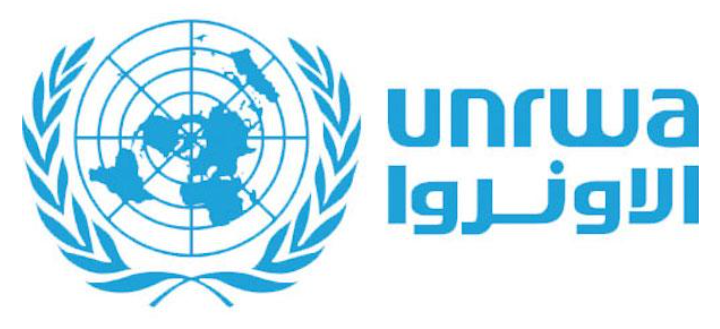
United Nations' Refugee Agency for Palestinians (UNRWA): An Overview
- About UNRWA
- UNRWA stands for UN Relief and Works Agency for Palestinian Refugees in the Near East.
- Established in 1949 to aid approximately 700,000 Palestinians displaced during the 1948 Arab-Israeli war.
- Working Region
- Operates in Gaza, the Israeli-occupied West Bank, Lebanon, Syria, and Jordan, providing services to Palestinian refugees.
- Areas of Work
- Manages education, health, relief, and social services, along with microfinance and emergency assistance programs.
- Operates within and outside refugee camps in the mentioned regions.
- Funding
- Relies heavily on voluntary contributions from donor states, with the United States being a significant contributor.
- Receives a limited subsidy from the UN for administrative costs.
- Performance
- Currently serves around 5.9 million Palestinian refugees, mostly descendants of the original refugees.
- Over 1 million people in Gaza seek shelter in UNRWA schools and facilities.
United Nations' Refugee Agency for Palestinians (UNRWA): Current Controversy
- Recent Urgency
- UN officials call on countries to reconsider pausing funding for UNRWA.
- Warns that aid for about two million people in Gaza is at risk.
- Israel's Accusations
- Israel alleges 12 UNRWA staff members were involved in an October 7 attack.
- Claims Hamas misuses funds allocated to UNRWA and operates from and around the agency's facilities.
- Accuses UNRWA of having tunnels near or under its facilities and teaching anti-Israel sentiments in schools.
- UNRWA's Response
- UNRWA denies all allegations, asserting no ties to Hamas.
- Out of the 12 accused staff members, nine have been terminated, one confirmed dead, and two identities under clarification.
- Current Situation
- UNRWA plays a crucial role in Gaza's survival amid a humanitarian crisis.
- Main supplier of food, water, and shelter; could run out of funds for aid work within weeks if funding is not restored.
Source: IE
Pradhan Mantri Suryodaya Yojana
In News: The Indian Prime Minister recently launched the 'Pradhan Mantri Suryodaya Yojana,' aiming to install rooftop solar power systems in one crore households across the nation.
Rooftop Solar Panels: An Overview
- About Rooftop Solar Panels
- Rooftop solar panels are photovoltaic panels installed on building roofs, connected to the main power supply.
- Benefits
- Reduces grid-connected electricity consumption, leading to cost savings for consumers.
- Surplus solar power can be exported to the grid, offering monetary benefits as per regulations.
- Related Government Initiatives
- In 2014, the government initiated the Rooftop Solar Programme targeting 40,000 MW by 2022.
- The deadline was extended to 2026 due to unmet targets.
- The Pradhan Mantri Suryodaya Yojana aims to contribute to the 40 GW rooftop solar capacity goal.
Current Solar Capacity in India
- Rooftop Solar Capacity
- Total rooftop solar capacity stands at 11.08 GW as of December 2023.
- Gujarat leads with 2.8 GW, followed by Maharashtra with 1.7 GW.
- Only 20% of installations are in the residential sector, with the majority in commercial and industrial sectors.
- Total Installed Capacity
- Overall solar power capacity is 73.31 GW as of December 2023.
- Rajasthan tops with 18.7 GW, followed by Gujarat with 10.5 GW.
- In rooftop solar capacity, Gujarat leads with 2.8 GW, followed by Maharashtra with 1.7 GW.
Other Government Initiatives
- National Solar Mission
- Solar Park Scheme
- Kisan Urja Suraksha evam Utthaan Mahabhiyan (PM-KUSUM)
- Suryamitra Skill Development Programme
- International Solar Alliance
|
UPSC Previous Year Questions Prelims (2016) Q. Consider the following statements:
Which of the statements given above is/are correct? (a) 1 only Ans: (a) Mains (2020) Q. India has immense potential of solar energy though there are regional variations in its developments. Elaborate. |
Source: IE
Golden Tiger in Kaziranga National Park
In News: A rare golden tiger was recently photographed in Kaziranga National Park (KNP) by a wildlife photographer.
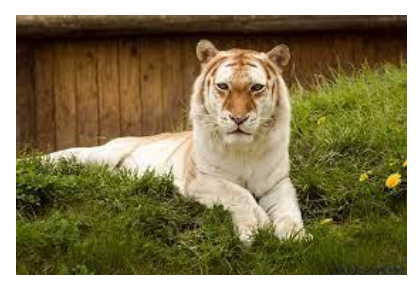
Key Facts About the Golden Tiger
- Golden Tiger Overview
- Golden tigers, also known as golden tabby tigers, represent a color variation and are not a distinct subspecies like white and black tigers.
- They are exceptionally rare both in the wild and in captivity.
- Genetic Basis
- Golden tigers in Kaziranga National Park (KNP) result from a color variation caused by a recessive gene called "wideband."
- This gene affects the production of black pigments during the hair growth cycle.
- Unlike typical tigers with black, orange, and white colors, golden tigers lack black color, and their orange hue appears faded.
Kaziranga National Park
- Established in 1908, KNP is located in the northeastern part of India, specifically in the districts of Golaghat and Nagaon in Assam.
- Designated as a National Park in 1974, KNP achieved World Heritage Site status by UNESCO in 1985 and was declared a Tiger Reserve in 2006.
- It stands as the largest undisturbed area in the Brahmaputra Valley floodplain.
- Vegetation and Wildlife
- KNP features diverse vegetation, including alluvial inundated grasslands, alluvial savanna woodlands, tropical moist mixed deciduous forests, and tropical semi-evergreen forests.
- Home to over 2200 Indian one-horned rhinoceros, constituting approximately two-thirds of the global population.
- The park hosts significant populations of threatened species such as tigers, elephants, wild water buffalo, bears, and Ganges River dolphins.
- Recognized as an important area for migratory birds.
|
UPSC Previous Year Questions Prelims (2013) Q. Consider the following pairs: National Park River flowing through Park
Which of the above pairs is/are correctly matched? (a) 1 and 2 Ans: (d) Prelims (2020) Q2. Among the following Tiger Reserves, which one has the largest area under “Critical Tiger Habitat”? (a) Corbett Ans: C Mains (2018) Q: “Policy contradictions among various competing sectors and stakeholders have resulted in inadequate ‘protection and prevention of degradation’ to environment.” Comment with relevant illustrations. |
Source: TH
SADA TANSEEQ
In News: The first-ever India-Saudi Arabia Joint Military Exercise, 'SADA TANSEEQ,' commenced in Mahajan, Rajasthan.
About SADA TANSEEQ
- Training Objective
- Train troops for Joint Operations in Semi-Desert terrain, aligning with Chapter VII of the United Nations Charter.
- Key Activities
- Conduct Mobile Vehicle Check Posts to enhance operational skills.
- Execute Cordon & Search Operations for tactical proficiency.
- Practice House Intervention Drills for urban warfare scenarios.
- Engage in Reflex Shooting exercises to sharpen marksmanship.
- Perform Slithering operations for rapid deployment and mobility.
- Conduct Sniper Firing exercises to refine precision and accuracy.
- Outcome and Opportunities
- Provide an opportunity to strengthen bilateral relations through collaborative training.
- Contribute to achieving shared security objectives through enhanced operational capabilities.
Source: PIB
Generative AI
In News: A recent report anticipates that the Generative AI (genAI) industry is set to reach a valuation of $100 billion by the year 2026.
Understanding Generative AI
- Definition
- Generative AI, or generative artificial intelligence, represents a category of artificial intelligence (AI) wherein algorithms autonomously generate content such as text, images, audio, and video.
- Distinguishing Feature
- In contrast to conventional AI focused on pattern recognition and predictions, generative AI is designed to create entirely new content.
- Foundations and Capabilities
- Powered by foundation models, large AI models proficient in multitasking and executing various out-of-the-box tasks like summarization, Q&A, and classification.
- Trained extensively on massive datasets to enhance performance and versatility.
- Operational Mechanism
- Utilizes a Machine Learning (ML) model to discern patterns and relationships within a dataset of human-created content.
- Generates new content based on learned patterns, initiated by a user-provided prompt.
- Workflow
- Initiated by a simple text input, known as a prompt, where users describe the desired output.
- Employing various algorithms, the system generates content aligned with the user's prompt.
Prominent Generative AI Tools
- ChatGPT
- Developed by OpenAI, ChatGPT is an AI-powered chatbot with the unique ability to generate written content and engage in fluent conversations.
- Bard
- Created by Google, Bard is a generative AI chatbot utilizing LaMDA language model technology. It responds to user queries and generates content based on text or image prompts.
Introduction to Machine Learning (ML)
- Definition
- Machine Learning (ML) is a subset of artificial intelligence (AI) that empowers machines to autonomously learn from data and past experiences. It involves identifying patterns and making predictions with minimal human intervention.
- Characteristics
- ML applications operate independently, learning and evolving from new data without explicit programming.
- Algorithms within ML systems learn directly from data, foregoing predetermined equations that may serve as models.
Source: ABP
Laughing Gulls
In News: Laughing gulls, migratory birds originating from North America, have been spotted in the country for the first time at the Chittari estuary in Kasaragod district.
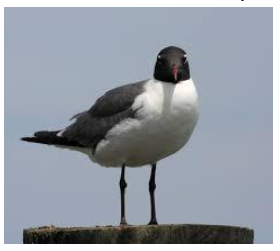
Laughing Gull Overview
- Distinctive Calls
- Recognized for its distinctive laughter-like calls, resembling human laughter.
- Habitat
- Primarily a coastal species, with occasional sightings occurring far inland.
- Distribution
- Mainly found along the Atlantic coast of North America, in the Caribbean, and northern South America.
- Diet
- Opportunistic carnivores and scavengers, consuming fish, shellfish, crabs, mollusks, insects, bird eggs, and young birds.
- Physical Features
- Medium-sized gulls with elongated wings and legs, exhibiting a graceful appearance in flight or on land.
- Possess stout and relatively long bills.
- Life Cycle
- Require 2-3 years to attain adult plumage.
- Conservation Status
- IUCN Status: Least Concern
Source: TH
Economic Community of West African States (ECOWAS)
In News: Recently, the military regimes in Burkina Faso, Mali, and Niger declared their prompt exit from the West African bloc ECOWAS.

Economic Community of West African States (ECOWAS) Overview
- Alternative Name
- Known as CEDEAO in French.
- Establishment
- Formed in 1975 through the Lagos Treaty.
- Mandate
- Focuses on promoting economic integration among member states.
- Vision
- Aims to create a "borderless region" with strong integration, governed by democratic principles, rule of law, and good governance.
- Member Countries
- Benin, Cape Verde, Cote d'Ivoire, The Gambia, Ghana, Guinea, Guinea Bissau, Liberia, Nigeria, Sierra Leone, Senegal, and Togo.
- Long-term Goals
- Aspires to establish a single common currency and form a large trading bloc encompassing industry, transport, telecommunications, energy, finance, and social and cultural matters.
- Conflict Resolution
- ECOWAS addresses military conflicts in the region and has engaged in peacekeeping efforts, notably through the regional peacekeeping operation ECOMOG, led by Nigeria in the 1990s and early 2000s.
- Headquarters
- Located in Abuja, Nigeria.
Source: TH
Addressing Malnutrition Challenges in India
In News: The article discusses the widespread issue of malnutrition in India and strategies for its effective mitigation.
Understanding Malnutrition
- Definition and Types
- Malnutrition, as defined by WHO, involves deficiencies, excesses, or imbalances in energy and nutrient intake.
- Types include undernutrition (wasting, stunting, underweight), micronutrient-related issues, obesity, and diet-related noncommunicable diseases.
- Global Prevalence
- In 2022, 149 million children under 5 were stunted, 45 million wasted, and 37 million overweight.
- Malnutrition-related deaths make up nearly half of under-5 mortality globally.
- 1.9 billion adults are overweight or obese.
Malnutrition in India
- Statistics
- NFHS-5 reports 35.5% stunted, 19.3% wasted, and 32.1% underweight children under 5.
- Malnutrition among women aged 15-49 is 18.7%.
- High prevalence of anaemia across various demographics.
- Challenges
- Economic inequality impacting food access.
- Shift towards processed diets lacking essential nutrients.
- Poor sanitation affecting nutrient absorption.
- Limited primary health infrastructure.
Consequences in India
- Health, Education, and Economic Impact
- Stunted growth, weakened immunity, and micronutrient deficiencies.
- Cognitive impairment impacting learning.
- Economic losses due to reduced productivity and increased healthcare costs.
- Inter-generational Impact
- Maternal and child health implications.
- Long-term health effects impacting future generations.
- Social Consequences
- Vulnerability and discrimination.
- Societal impact on mental health.
Government Initiatives
- Programs
- Mission Poshan 2.0, ICDS, PMMVY, Mid-Day Meal, SAG, MAA, Poshan Vatikas.
- Steps Taken
- Fortification of staple foods.
- SBCC Action Plan.
- Healthcare infrastructure strengthening.
- Monitoring and evaluation systems.
Effective Measures
- Fortification and SBCC
- Adopt fortification of staple foods.
- Develop a focused SBCC Action Plan.
- Healthcare Infrastructure
- Enhance healthcare facilities, especially in rural areas.
- Focus on early detection and management.
- Community Involvement
- Promote consumption of locally nutritious food.
- Involve local communities in program design and implementation.
- Communication Strategies
- Utilize various channels for effective communication.
- Craft messages in vernacular languages.
Conclusion
- Achieving Zero Hunger
- Prioritize health and well-being.
- Collaborative strategy for significant reduction in malnutrition.
- Unlocking the nation's full potential for a healthier, prosperous future.
|
UPSC Previous Year Questions Prelims (2016) Q. Which of the following is/are the indicators/ indicators used by IFPRI to compute the Global Hunger Index Report?
Select the correct answer using the code given below: (a) 1 only Ans: C Mains (2018) Q. How far do you agree with the view that the focus on lack of availability of food as the main cause of hunger takes the attention away from ineffective human development policies in India? |
Source: IE
Share the article
Edukemy’s Current Affairs Quiz is published with multiple choice questions for UPSC exams
MCQ
Get Latest Updates on Offers, Event dates, and free Mentorship sessions.

Get in touch with our Expert Academic Counsellors 👋
FAQs
UPSC Daily Current Affairs focuses on learning current events on a daily basis. An aspirant needs to study regular and updated information about current events, news, and relevant topics that are important for UPSC aspirants. It covers national and international affairs, government policies, socio-economic issues, science and technology advancements, and more.
UPSC Daily Current Affairs provides aspirants with a concise and comprehensive overview of the latest happenings and developments across various fields. It helps aspirants stay updated with current affairs and provides them with valuable insights and analysis, which are essential for answering questions in the UPSC examinations. It enhances their knowledge, analytical skills, and ability to connect current affairs with the UPSC syllabus.
UPSC Daily Current Affairs covers a wide range of topics, including politics, economics, science and technology, environment, social issues, governance, international relations, and more. It offers news summaries, in-depth analyses, editorials, opinion pieces, and relevant study materials. It also provides practice questions and quizzes to help aspirants test their understanding of current affairs.
Edukemy's UPSC Daily Current Affairs can be accessed through:
- UPSC Daily Current Affairs can be accessed through Current Affairs tab at the top of the Main Page of Edukemy.
- Edukemy Mobile app: The Daily Current Affairs can also be access through Edukemy Mobile App.
- Social media: Follow Edukemy’s official social media accounts or pages that provide UPSC Daily Current Affairs updates, including Facebook, Twitter, or Telegram channels.

